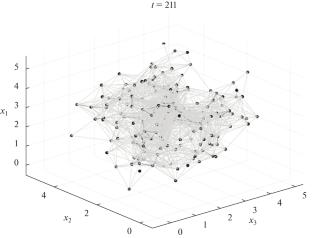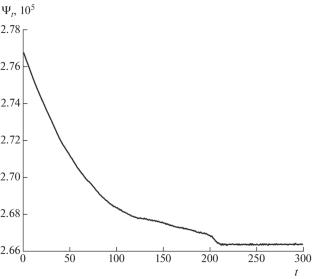重核裂变中核子聚集和碎片形成的模型
IF 0.48
Q4 Physics and Astronomy
Bulletin of the Russian Academy of Sciences: Physics
Pub Date : 2025-08-18
DOI:10.1134/S1062873825712085
引用次数: 0
摘要
在扩展的vicsek型集体模型框架内考虑了裂变碎片形成的理论描述问题。非平均场方法是基于对原子核聚簇现象的微观模拟,这是由于粒子之间的短程相互作用而聚集的现象。对重核和超重核多模态裂变实验中观察到的208Pb团簇进行了数值模拟。本文章由计算机程序翻译,如有差异,请以英文原文为准。


Model of Nucleon Clustering and Fragment Formation in Fission of Heavy Nuclei
The problem of theoretical description of the formation of fission fragments was considered within the framework of an extended Vicsek-type collective model. The non-mean-field approach is based on microscopic modeling of the nucleon clustering as a phenomenon of particle aggregation due to short-range mutual interaction. Numerical computer simulations were carried out for the 208Pb cluster, which is observed experimentally in the multimodal fission of heavy and superheavy nuclei.
求助全文
通过发布文献求助,成功后即可免费获取论文全文。
去求助
来源期刊

Bulletin of the Russian Academy of Sciences: Physics
Physics and Astronomy-Physics and Astronomy (all)
CiteScore
0.90
自引率
0.00%
发文量
251
期刊介绍:
Bulletin of the Russian Academy of Sciences: Physics is an international peer reviewed journal published with the participation of the Russian Academy of Sciences. It presents full-text articles (regular, letters to the editor, reviews) with the most recent results in miscellaneous fields of physics and astronomy: nuclear physics, cosmic rays, condensed matter physics, plasma physics, optics and photonics, nanotechnologies, solar and astrophysics, physical applications in material sciences, life sciences, etc. Bulletin of the Russian Academy of Sciences: Physics focuses on the most relevant multidisciplinary topics in natural sciences, both fundamental and applied. Manuscripts can be submitted in Russian and English languages and are subject to peer review. Accepted articles are usually combined in thematic issues on certain topics according to the journal editorial policy. Authors featured in the journal represent renowned scientific laboratories and institutes from different countries, including large international collaborations. There are globally recognized researchers among the authors: Nobel laureates and recipients of other awards, and members of national academies of sciences and international scientific societies.
 求助内容:
求助内容: 应助结果提醒方式:
应助结果提醒方式:


